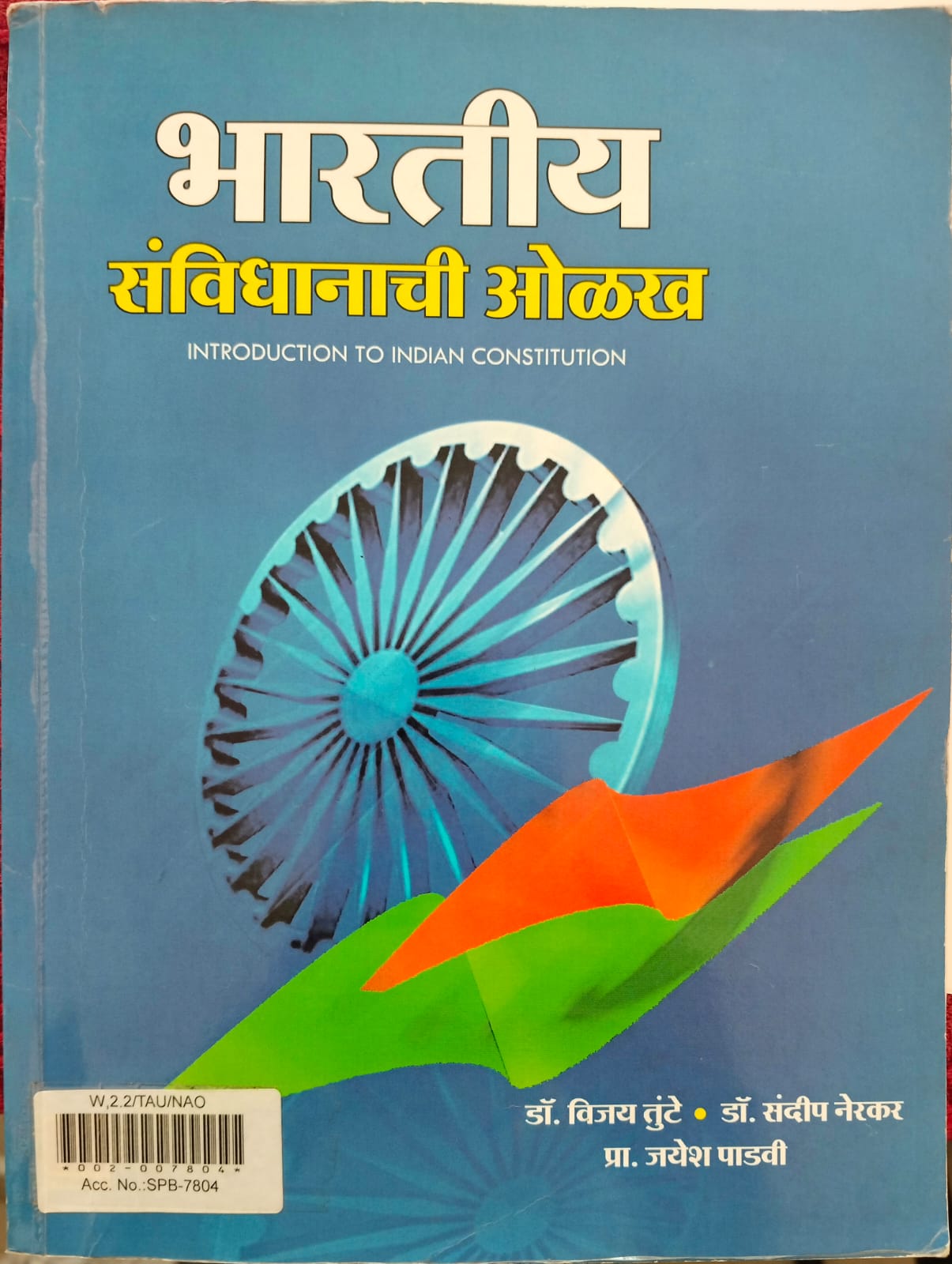Book Review : Das Swati Harishchandra, MGV's Loknete Vyankatrao Hiray Arts Science and Commerce College Panchvati, Nashik. The book (Introduction to Indian Constitution) appears to focus on providing a concise and comprehensive overview of the Indian
Read More
Book Review : Das Swati Harishchandra, MGV’s Loknete Vyankatrao Hiray Arts Science and Commerce College Panchvati, Nashik.
The book (Introduction to Indian Constitution) appears to focus on providing a concise and comprehensive overview of the Indian Constitution. Written in Marathi, it is likely aimed at students, educators, or individuals interested in understanding the constitutional framework of India. Below is a summarized interpretation of what such a book might cover: Key Features of the Indian Constitution:1. Introduction to the Constitution:
A brief history of the making of the Indian Constitution. The significance of the Constituent Assembly and the drafting process. Influences from other constitutions and unique features of the Indian Constitution. 2.Preamble: Explanation of the Preamble and its ideals, including justice, liberty, equality, and fraternity. The role of the Preamble in setting the goals and aspirations of the Constitution.3. Fundamental Rights and Duties:
Detailed discussion on Fundamental Rights enshrined in Part III of the Constitution. Responsibilities of citizens as listed under Fundamental Duties. The balance between rights and duties in a democratic setup.4. Directive Principles of State Policy (DPSP):Understanding the socio-economic principles guiding state policies. Relationship between DPSPs and Fundamental Rights.5. Structure of Government:
Separation of powers between the Legislature, Executive, and Judiciary. The federal structure of governance with the division of powers between the Union and States. The parliamentary system of governance.6. Judiciary: The role of the Supreme Court and High Courts in upholding the Constitution. Judicial review and its importance in ensuring the supremacy of the Constitution.7. Amendments to the Constitution: Procedures for amending the Constitution as outlined in Article 368.Significant amendments and their impact on Indian democracy.8. Special Provisions and Schedules: Overview of the special provisions for Scheduled Castes, Scheduled Tribes, and other marginalized communities. Understanding the importance of the Schedules, such as the division of powers, allocation of resources, etc.9. Elections and Representation: The electoral process and the functioning of the Election Commission. Provisions related to free and fair elections.10. Emergency Provisions: Detailed explanation of Articles 352, 356, and 360.The scope and misuse of emergency powers. Conclusion: The book likely concludes with an emphasis on the importance of the Indian Constitution as a living document. It highlights its adaptability to changing socio-political dynamics while maintaining its core principles. The Constitution’s role in promoting democracy, equality, and justice would also be reiterated.
Show Less

